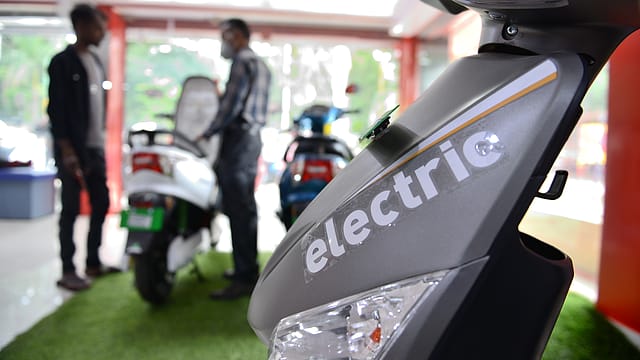Jio-bp eyes E-2-wheeler charging if govt mandates single connector
ADVERTISEMENT

Charge point operators are unlikely to put their money into setting up charging stations for electric two-wheelers unless the government steps in and mandates one connector, says Haresh Bhere, chief technology officer of Jio-bp pulse, the electric mobility arm of Reliance Industries-backed Jio-bp.
"Out of total power consumption by the electric vehicle industry, 43% of electricity is expected to be consumed by electric two-wheelers by 2030. If that’s the case and you do not have standardisation, no charge point operator is going to put money into it," Bhere tells Fortune India at the India Energy Storage Week (IESW) expo in New Delhi.
Jio-bp currently operates around 5,000 charge points catering to four-wheelers. The company aims to double this to 10,000 charge points by the end of this year.
On standardisation of chargers, Bhere says the two-wheeler industry needs to come together. There are two factions in the industry where one wants Type-6 (only DC) while the other wants Type-7 (AC and DC), the government has to step in and pick one, he says. "Unless it does that, no CPO will put their money into it."
Electric scooter startup Ather Energy's combined charging standard for light electric vehicles was last year recognised by the Bureau of Indian Standards (BIS). Ather has opened its charging connector to other EV manufacturers. Hero MotoCorp, which owns over 40% stake in Ather, already uses the startup's connector. On the other hand, India's largest electric two-wheeler maker Ola Electric has its own proprietary connector.
December 2025
The annual Fortune 500 India list, the definitive compendium of corporate performance, is out. This year, the cumulative revenue of the Fortune 500 India companies has breached $2 trillion for the first time. Plus, find out which are the Best B-schools in India.
The government has to mandate one standard for the greater good like the European Union has mandated Type-C connector for Apple iPhone and Combined Charging System-2 (CCS2) for passenger cars, says Bhere.
On subsidy for EV charge point operators, Bhere says the government should keep some criteria like not paying a single penny to CPOs setting up low-kilowatt chargers for passenger vehicles. "Why should the government invest money in something which is going to be obsolete in a few years? It should also not give subsidy to those who can't promise uptime of EV chargers," he says.
Bhere, however, acknowledges the need for government support for the first five years as the utilisation factor for EV chargers is in lower single digits due to low EV penetration.
The biggest challenge is the power infrastructure which is almost double the cost of the charger, says Bhere. “Power ministry has already done one good job. The government has said that no fixed cost tariff should be charged to EV charging stations but many discoms don’t follow that. They still charge you the fixed cost. When the utilisation factor is low, that cost becomes huge,” he adds.
Companies need 8-10% utilisation to achieve profitability, Bhere says, adding that charge point operators are getting 2-4% average utilisation currently.
In June, the power ministry proposed that the tariff for supplying electricity to EV charging stations shall be a single part tariff and should not exceed the average cost of supply (ACoS) till March 31, 2026. The draft also proposes that the cost of supply by discoms to EV charging station will be 0.7 times of ACoS during solar hours and 1.3 times ACoS during non-solar hours. Solar hours mean 9:00 AM to 4:00 PM time and non-solar hours mean the remaining period of the day.
Till the time India's EV charging industry is able to stand on its own, municipal corporations should provide land to CPOs with minimal leasing charges, suggests Bhere.
